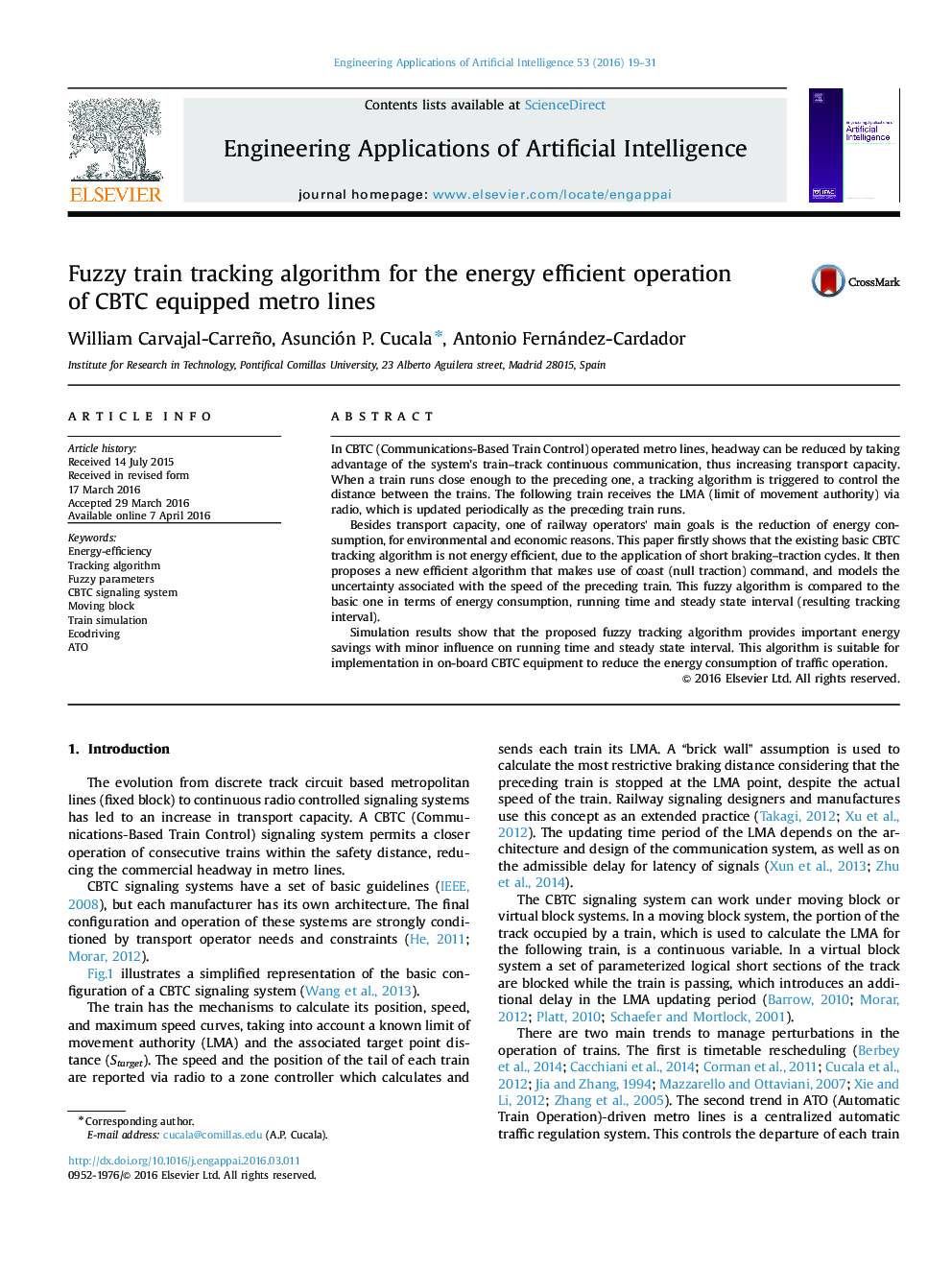| Article ID | Journal | Published Year | Pages | File Type |
|---|---|---|---|---|
| 380173 | Engineering Applications of Artificial Intelligence | 2016 | 13 Pages |
In CBTC (Communications-Based Train Control) operated metro lines, headway can be reduced by taking advantage of the system's train–track continuous communication, thus increasing transport capacity. When a train runs close enough to the preceding one, a tracking algorithm is triggered to control the distance between the trains. The following train receives the LMA (limit of movement authority) via radio, which is updated periodically as the preceding train runs.Besides transport capacity, one of railway operators’ main goals is the reduction of energy consumption, for environmental and economic reasons. This paper firstly shows that the existing basic CBTC tracking algorithm is not energy efficient, due to the application of short braking–traction cycles. It then proposes a new efficient algorithm that makes use of coast (null traction) command, and models the uncertainty associated with the speed of the preceding train. This fuzzy algorithm is compared to the basic one in terms of energy consumption, running time and steady state interval (resulting tracking interval).Simulation results show that the proposed fuzzy tracking algorithm provides important energy savings with minor influence on running time and steady state interval. This algorithm is suitable for implementation in on-board CBTC equipment to reduce the energy consumption of traffic operation.
